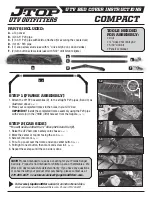
Warning Lights, Gages and
Indicators
This part describes the warning lights and gages that
may be on your vehicle. The pictures will help you
locate them.
Warning lights and gages can signal that something is
wrong before it becomes serious enough to cause
an expensive repair or replacement. Paying attention
to your warning lights and gages could also save you or
others from injury.
Warning lights come on when there may be or is a
problem with one of your vehicle’s functions. As you
will see in the details on the next few pages, some
warning lights come on briefly when you start the engine
just to let you know they’re working. If you are familiar
with this section, you should not be alarmed when
this happens.
Gages can indicate when there may be or is a problem
with one of your vehicle’s functions. Often gages
and warning lights work together to let you know when
there’s a problem with your vehicle.
When one of the warning lights comes on and stays
on when you are driving, or when one of the gages
shows there may be a problem, check the section that
tells you what to do about it. Follow this manual’s
advice. Waiting to do repairs can be costly – and even
dangerous. So please get to know your warning
lights and gages. They’re a big help.
Your vehicle also has a Driver Information Center (DIC)
that works along with the warning lights and gages.
See
Driver Information Center (DIC) on page 3-50 for
more information.
3-34
Summary of Contents for 2004 CTS
Page 5: ...These are some examples of vehicle symbols you may find on your vehicle v ...
Page 6: ... NOTES vi ...
Page 17: ...Put someone on it Get it up to speed Then stop the vehicle The rider doesn t stop 1 11 ...
Page 125: ... NOTES 3 3 ...
Page 126: ...Instrument Panel Overview 3 4 ...
Page 300: ...When you open the hood on the 3 6L HFV6 you ll see the following 5 14 ...
Page 394: ... NOTES 5 108 ...
Page 426: ... NOTES 7 14 ...
















































